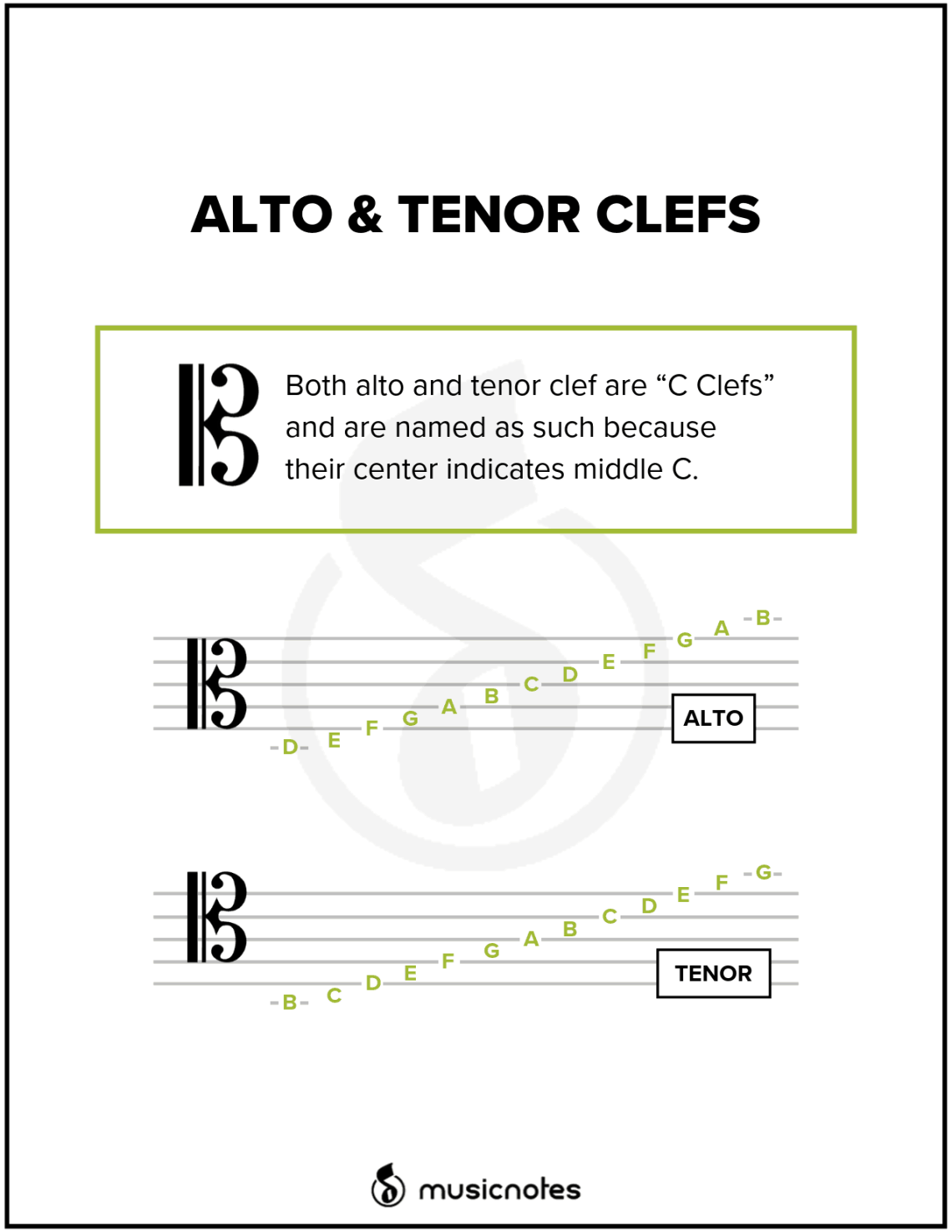
Alto and tenor clef note positions
Contents
The alto and tenor clefs are DO clefs, that is, clefs that point to the DO note of the first octave. Only these keys are tied to different rulers of the stave, so their musical system has different reference points. So, in the alto clef, the note DO is written on the third line, and in the tenor clef on the fourth.
Alto Key
The alto clef is used mainly for recording alto music, rarely used by cellists, and even more rarely by other instrumental musicians. Sometimes the alto parts can also be written in the treble clef, if this is convenient.
In ancient music, the role of the alto clef was more important, since there were more instruments in use for which recording in the alto clef was convenient. In addition, in the music of the Middle Ages and the Renaissance, vocal music was also recorded in the alto key, as a result, this practice was abandoned.
The range of sounds that are recorded in the alto key is the whole small and first octave, as well as some notes of the second octave.
Notes of the first and second octaves in the alto key
- The note DO of the first octave in the alto clef is written on the third line.
- Note PE of the first octave in the alto key is located between the third and fourth lines
- The MI note of the first octave in the alto clef is placed on the fourth line.
- The note FA of the first octave in the alto key is “hidden” between the fourth and fifth lines.
- The note SOL of the first octave in the alto key occupies the fifth line of the staff.
- The note LA of the first octave of the alto clef is located above the fifth line, above the stave from above.
- The note SI of the first octave in the alto key should be looked for on the first additional line from above.
- The note DO of the second octave of the alto key is above the first additional one, above it.
- The PE note of the second octave, its address in the alto clef is the second auxiliary line from the top.
- Note MI of the second octave of the alto clef is written above the second additional line of the staff.
- The note FA of the second octave in the alto key occupies the third additional line of the staff from above.
Small octave notes in alto clef
If the notes of the first octave in the alto clef occupy the upper half of the staff (starting from the third line), then the notes of the small octave are written lower and occupy, respectively, the lower half.
- The note DO of the small octave in the alto clef is written under the first additional ruler.
- The note PE of the small octave in the alto clef is written on the first auxiliary line at the bottom.
- The MI note of the small octave of the alto clef is located under the staff, under its first main line.
- The note FA of the small octave in the alto clef must be sought on the first main line of the stave.
- The note SA of the small octave in the alto clef is written in the interval between the first and second lines of the staff.
- The note LA of the small octave of the alto clef occupies, respectively, the second line of the staff.
- Note SI of a small octave, in the alto key its address is between the second and third lines of the stave.
Tenor key
The tenor clef differs from the alto clef only in its “reference point”, since in it the note BEFORE the first octave is written not on the third line, but on the fourth. The tenor clef is used to fix music for instruments such as cello, bassoon, trombone. I must say that the parts of the same instruments are often written in the bass clef, while the tenor clef is used occasionally.
In the tenor key, notes of the small and first octaves predominate, as well as in the alto, however, compared to the latter, high notes are much less common in the tenor range (in the alto, on the contrary).
Notes of the first octave in the tenor key
Small octave notes in tenor clef
Notes are recorded in alto and tenor clefs with a difference of exactly one line. As a rule, reading notes in new keys causes inconvenience only at first, then the musician quickly gets used to and adjusts to a new perception of the musical text with these keys.
In parting, today we will show you an interesting program about the viola. Transfer from the project “Academy of Entertaining Arts – Music”. We wish you success! Come visit us more often!





